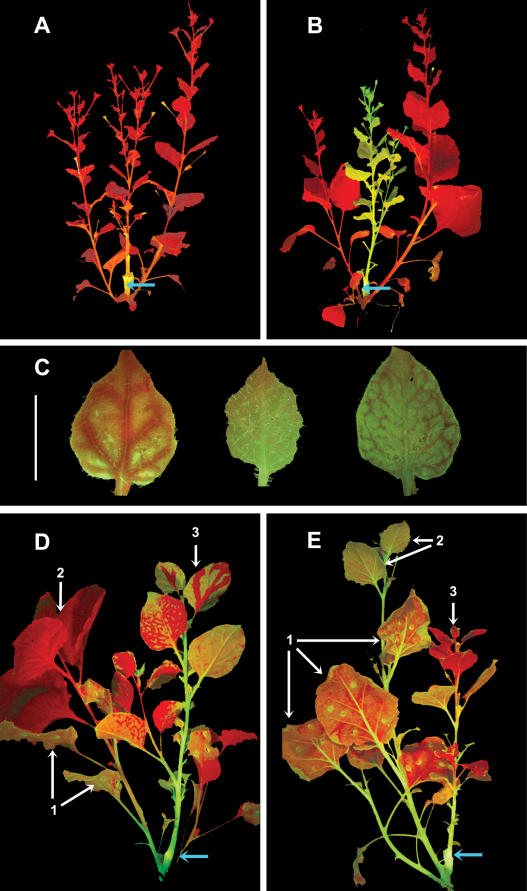Figure 7.
Grafting experiments, RDR6i plants as either receptors or producers of a systemic silencing signal. Graft junctions are indicated by blue arrows and all plants are shown under UV illumination. A, A GFP16c plant grafted as scion onto a GFP16c/GFPi stock exhibited complete silencing of GFP within 2 weeks. B, A GFP16c/RDR6i plant grafted as scion onto a GFP16c/GFPi stock remained unsilenced as shown here after 3 weeks and later. C, Young, not yet fully expanded leaves of GFP16c scions (left) showed GFP silencing around the veins as shown here after 1 week that eventually spread so that the whole leaf appeared red under UV light. Leaves of the same stage of GFP16c/RDR6i scions normally did not exhibit any sign of GFP silencing (middle) but in 6/24 plants a pattern of vein-centered silencing was observed that failed to spread into the rest of the leaf (right). White bar = 0.5 cm. D, Transient expression of GFPi in leaves (1) of a GFP16c rootstock induced systemic silencing in the rootstock (2) and a GFP16c scion (3) at 24 d. E, GFP16c/RDR6i rootstocks exhibited local silencing in inoculated leaves, transiently expressing the GFPi construct (1) but no spread of silencing into newly emerging leaves occurred (2). A silencing signal was still produced in these rootstocks, which induced systemic silencing in GFP16c scions after 24 d (3).

